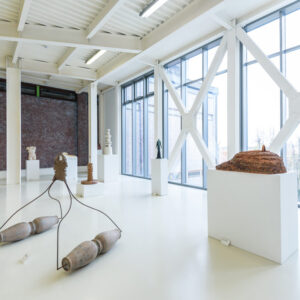While stone, clay and bronze are the materials that have traditionally been adopted by sculptors at all times in history, artists have always sought to express themselves through experimentation with unusual, simple, evocative, natural or artificial materials, often characterised by particular expressive properties or linked with the evolution of technology.
In addition to a vast selection of works which are “classical” in theme and materials, MAGI also offers a broader view of the plastic arts of the twentieth and twenty-first centuries through a highly heterogeneous selection of artistic philosophies, subjects and materials.
The exhibition route begins on the museum’s lower level, where a large open space contains multi-material works as well as items made of wood, plastic, and recycled materials and objects, extending over all the museum’s levels and crossing paths with the museum’s various collections arranged by theme or artist.
The echo of the historic avant-garde movements, such as Futurism, Dadaism and Surrealism, is particularly present in the reworking of contemporary artists who adopted the freedom of expression of their precursors as a constant feature of their work over the decades since the Second World War.
Major installations, models for projects on an urban scale, plaster casts and trial casts, fragile or unbreakable, small or monumental in scale, luminous or mirroring, ironic or dramatic, explore the third dimension and offer visitors a highly varied perceptive experience, capable of restoring the great poten








